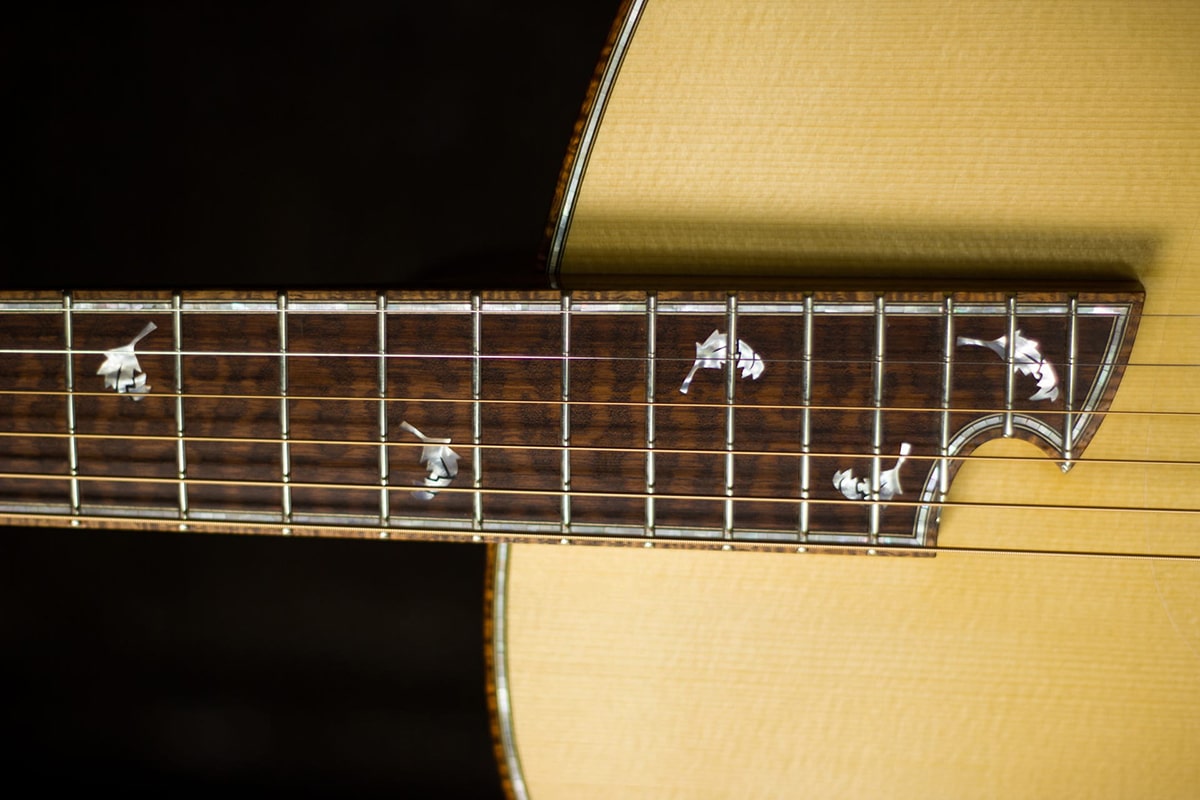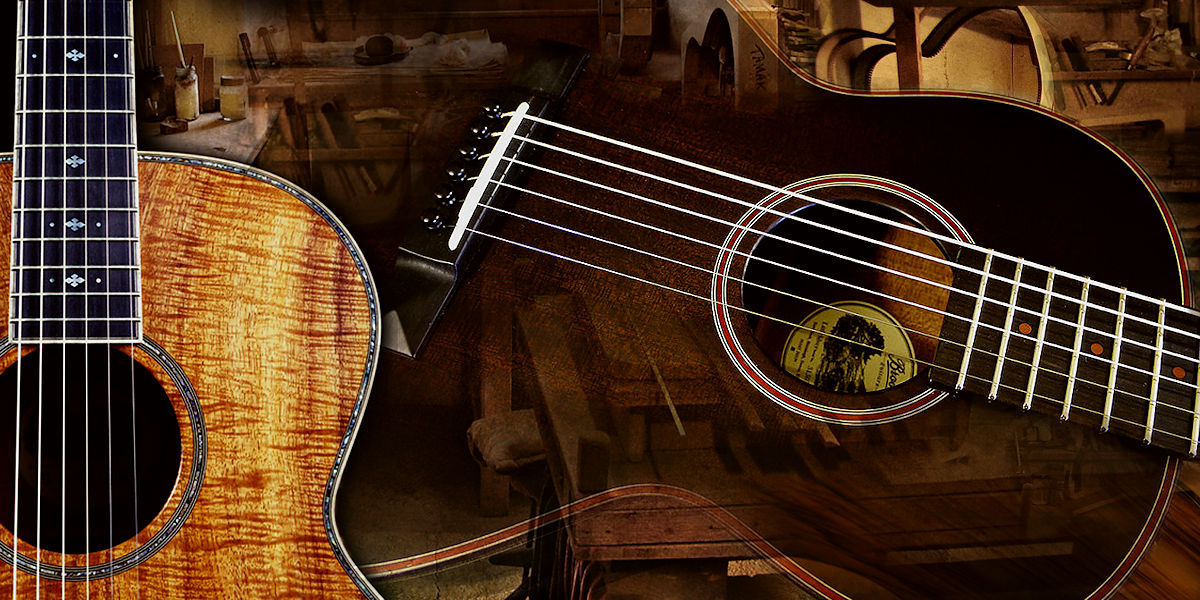Introduction
When it comes to playing the acoustic guitar, understanding its anatomy and the number of frets it has is essential for both beginners and seasoned players. The frets on a guitar play a crucial role in producing different notes and chords, influencing the instrument's playability and sound. In this article, we will delve into the specifics of acoustic guitar frets, shedding light on the standard number of frets and variations that are available.
Understanding the frets on an acoustic guitar is fundamental to mastering the instrument. Whether you are a beginner seeking to comprehend the basics or an experienced guitarist aiming to explore extended range guitars, this guide will provide you with valuable insights. By the end of this article, you will have a comprehensive understanding of the frets on an acoustic guitar and their significance in shaping the musical experience for players and audiences alike. Let's embark on this journey to unravel the mysteries of acoustic guitar frets, from the fundamentals to the advanced variations, and discover the impact they have on the instrument's versatility and sonic capabilities.
Anatomy of an Acoustic Guitar
Before delving into the specifics of frets, it’s crucial to familiarize ourselves with the basic anatomy of an acoustic guitar. This timeless instrument comprises several key components, each contributing to its unique sound and playability.
The body of an acoustic guitar is typically made up of the top, back, and sides, which can be crafted from various tonewoods, such as spruce, mahogany, or rosewood. The sound hole, located on the top of the guitar, plays a pivotal role in projecting the instrument’s acoustic resonance. Moving up the guitar, the neck extends from the body and is topped with the headstock, which houses the tuning pegs for adjusting the tension of the strings.
At the core of the guitar’s neck is the fretboard, a crucial component that hosts the frets. The fretboard is usually made of dense wood, such as ebony or rosewood, and its smooth surface allows the player to press down on the strings to produce different pitches. The frets are thin metal strips embedded into the fretboard at specific intervals, dividing the neck into distinct segments. As the player presses a string against a fret, the effective length of the string is shortened, altering the pitch produced when plucked.
Understanding the anatomy of an acoustic guitar provides a solid foundation for comprehending the function and significance of frets. The interplay between the various components of the guitar contributes to its rich, resonant sound and versatile playability, making it a beloved instrument for musicians across genres and skill levels.
Fretboard Basics
The fretboard, also known as the fingerboard, is a critical element of the guitar that directly influences the playability and tonal range of the instrument. Typically made from durable and smooth wood, such as rosewood or ebony, the fretboard provides a comfortable surface for the player’s fingers to press down on the strings and create distinct pitches.
One of the fundamental aspects of the fretboard is the concept of frets. These small metal strips are precisely placed along the length of the fretboard, dividing it into segments that correspond to different musical notes. When a string is pressed against a fret and plucked, the shortened length of the string produces a specific pitch, allowing the player to create melodies, chords, and harmonies.
Additionally, the fretboard features position markers, which are visual indicators that assist the player in navigating the neck of the guitar. These markers are often located at specific frets, such as the third, fifth, seventh, ninth, and twelfth frets, serving as reference points for identifying different regions of the fretboard without needing to count frets.
Understanding the basics of the fretboard is essential for players at all levels, as it forms the foundation for learning scales, chords, and improvisation. Mastery of the fretboard enables guitarists to navigate the instrument with precision and confidence, unlocking a world of musical possibilities and creative expression.
Standard Number of Frets
Traditionally, the standard number of frets on an acoustic guitar is 20, though variations exist. This configuration comprises 19 frets located on the neck and an additional fret situated where the neck meets the body, known as the twentieth fret. The twentieth fret extends the playable range of the guitar, allowing for higher notes to be produced, and is a common feature on acoustic guitars as well as electric guitars.
The distribution of frets along the neck enables guitarists to access a wide range of pitches, facilitating the exploration of melodies, scales, and chords across different musical genres. The nineteenth fret, positioned just before the twentieth fret, marks the boundary between the neck and the body, serving as a reference point for players as they navigate the upper register of the instrument.
For many guitarists, the standard 20-fret configuration offers a balanced range that caters to diverse playing styles and musical compositions. Whether strumming folk chords, picking intricate melodies, or performing complex solos, the 20-fret acoustic guitar provides a versatile platform for artistic expression and sonic exploration.
It’s important to note that certain acoustic guitar models may deviate from the standard 20-fret design. Some guitars feature fewer frets, typically 12 or 14, which are commonly found on parlor guitars and other compact acoustic instruments. These guitars, while offering a more limited range, possess a unique tonal character and are favored for their intimate, vintage-inspired sound.
On the other end of the spectrum, extended range acoustic guitars, such as 22-fret or 24-fret models, cater to players seeking an expanded upper register and access to even higher notes. These guitars are often utilized in genres that demand intricate fingerstyle playing, wide-ranging vocal accompaniment, or avant-garde musical expressions.
Understanding the standard number of frets on an acoustic guitar provides valuable insight into the instrument’s sonic capabilities and the range of musical possibilities it offers to players. Whether adhering to tradition or embracing innovative designs, the number of frets on an acoustic guitar plays a pivotal role in shaping the instrument’s sonic identity and accommodating diverse playing styles.
Extended Range Guitars
Beyond the traditional 20-fret configuration, extended range acoustic guitars offer an expanded upper register, catering to the diverse musical needs and preferences of players. These guitars, characterized by additional frets beyond the standard 20, provide access to higher notes and enhanced sonic versatility, making them well-suited for specific playing styles and musical genres.
One common variation is the 22-fret acoustic guitar, which extends the playable range beyond the traditional 20 frets, offering two additional frets at the upper end of the neck. This extension provides guitarists with access to higher pitches, enabling them to explore melodies and chord voicings that may require the use of these elevated notes. The 22-fret configuration is favored by players who seek extended range without venturing into the realm of more specialized multi-scale or fanned-fret designs.
Furthermore, some acoustic guitars feature an even greater number of frets, with 24-fret models being particularly popular among musicians who demand an expansive upper register and the ability to access extremely high notes. These guitars are well-suited for intricate fingerstyle playing, advanced chord voicings, and musical compositions that require a broad tonal range.
Extended range acoustic guitars are often embraced by players who specialize in genres such as jazz, fusion, experimental music, and contemporary fingerstyle, where the additional frets facilitate the execution of complex arrangements and the exploration of unconventional harmonies. The expanded upper register of these guitars opens up new creative possibilities, allowing musicians to push the boundaries of traditional acoustic guitar performance.
It’s important to note that while extended range acoustic guitars offer enhanced versatility, they also require a nuanced approach to playing, particularly when navigating the extended fretboard and engaging with the additional upper frets. Mastery of these instruments empowers guitarists to craft intricate compositions, execute expressive performances, and push the sonic boundaries of the acoustic guitar.
By embracing extended range acoustic guitars, players can tap into a broader tonal palette and unlock new avenues for musical expression, enriching their artistic journey and contributing to the evolving landscape of acoustic guitar performance and composition.
Conclusion
Exploring the intricacies of acoustic guitar frets reveals the nuanced role they play in shaping the instrument’s sonic capabilities and playability. From the standard 20-fret configuration to extended range guitars with additional frets, the diversity in fretboard designs offers guitarists a spectrum of options to suit their musical preferences and creative aspirations.
Understanding the anatomy of an acoustic guitar, including the fretboard and frets, provides a foundational knowledge that empowers players to navigate the instrument with confidence and precision. The fretboard serves as a canvas for musical expression, facilitating the creation of melodies, chords, and harmonies that define the unique voice of the acoustic guitar.
As players delve into the world of frets, they encounter the standard 20-fret acoustic guitar, a versatile platform that caters to a wide range of playing styles and musical genres. This traditional configuration, complemented by position markers and a balanced tonal range, has stood the test of time and remains a beloved choice for guitarists worldwide.
Moreover, extended range acoustic guitars, featuring additional frets beyond the standard 20, offer an expanded upper register and heightened sonic versatility. These instruments cater to the demands of diverse musical genres and playing styles, providing musicians with the tools to explore new creative frontiers and push the boundaries of acoustic guitar performance.
Ultimately, the number of frets on an acoustic guitar is not merely a technical specification but a defining characteristic that influences the instrument’s sonic identity and the expressive potential it offers to players. Whether adhering to tradition or embracing innovative designs, the frets on an acoustic guitar serve as conduits for artistic exploration, enabling musicians to craft captivating melodies, intricate harmonies, and evocative performances.
As players continue to embrace the rich tapestry of acoustic guitar frets, they embark on a journey of musical discovery, pushing the boundaries of their craft and contributing to the ever-evolving landscape of acoustic guitar performance and composition.

























